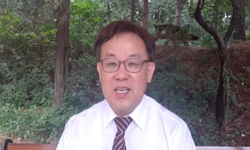Purpose: Silicone tube intubation is the most common method for treatment of nasolacrimal drainage disorder or repair of lacerated canaliculus. However, some cases are prolapsed earlier than expected, subsequently affecting the success rate of silicon...
http://chineseinput.net/에서 pinyin(병음)방식으로 중국어를 변환할 수 있습니다.
변환된 중국어를 복사하여 사용하시면 됩니다.
- 中文 을 입력하시려면 zhongwen을 입력하시고 space를누르시면됩니다.
- 北京 을 입력하시려면 beijing을 입력하시고 space를 누르시면 됩니다.
https://www.riss.kr/link?id=A107766465
- 저자
- 발행기관
- 학술지명
- 권호사항
-
발행연도
2021
-
작성언어
-
- 주제어
-
KDC
510
-
등재정보
SCOPUS,KCI등재
-
자료형태
학술저널
-
수록면
231-234(4쪽)
- DOI식별코드
- 제공처
- 소장기관
-
0
상세조회 -
0
다운로드
부가정보
다국어 초록 (Multilingual Abstract)
Purpose: Silicone tube intubation is the most common method for treatment of nasolacrimal drainage disorder or repair of lacerated canaliculus. However, some cases are prolapsed earlier than expected, subsequently affecting the success rate of silicone tube intubation. The author introduced a successful reposition of the prolapsed silicone tube. Methods: This study is a retrospective case series of 11 patients who were treated with reposition of prolapsed silicone tube using hole and lacrimal probe method. In all cases, the tubes were prolapsed within 2 months after the first surgery due to careless rubbing of the medial canthus by the patient. In all 11 cases, the development of a biofilm on tube was not observed at the time when the tube was prolapsed. All patients underwent immediate reposition of prolapsed tube without local anesthesia in the outpatient operating room on the day they visited. Results: In all 11 cases, the prolapsed silicone tube was repositioned without any complications using this hole and lacrimal probe method. At 6-month follow-up examination, all patients presented with a well-positioned silicone tube up to the day of extubation without replacing it with a new silicone tube. Conclusions: This hole and lacrimal probe method is effective for the repositioning of prolapsed silicone tube after bicanalicular intubation of lacrimal system. This procedure includes easy performance in a short time and without local anesthesia in the outpatient operating room.
목차 (Table of Contents)
- Materials and Methods Results Discussion Conflict of Interest References
- Materials and Methods Results Discussion Conflict of Interest References
동일학술지(권/호) 다른 논문
-
- 대한안과학회
- Christa Soekamto
- 2021
- SCOPUS,KCI등재
-
Blood Count-derived Immunoinflammatory Markers in Thyroidassociated Ophthalmopathy
- 대한안과학회
- Volkan Yeter
- 2021
- SCOPUS,KCI등재
-
- 대한안과학회
- Hyo Jin Seong
- 2021
- SCOPUS,KCI등재
-
Use of Nd: YAG Laser to Recanalize XEN Gel Stent Occluded by Iris Pigment
- 대한안과학회
- Jae Gon Kim
- 2021
- SCOPUS,KCI등재






 스콜라
스콜라







